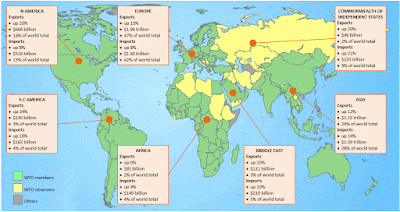VISUAL SYMBOLS
- are representations of direct reality, which comes in the form of signs and symbols.
- Like a picture a graph and all other visual symbols, are worth a thousand words, The proper use of visual symbols will contribute to optimum learning.
KINDS OF VISUAL SYMBOLS
- Visual symbols come in many forms – drawings, cartoons, strip drawing (comic strip) diagram, map, chart and graph.
Posters
- A combination of bold designs and color primarily intended to catch attention on a significant fact, idea or message.
Drawings
- A drawing may not be the real thing but better to have a concrete visual aid than nothing. To avoid confusion, it is good that our drawing correctly represents the real thing.
Cartoons
- A fist rate cartoon tells its story metaphorically. The perfect cartoon needs no caption. The less the artist depends on words, the more effective the symbolism. The symbolism conveys the message.
Strip drawings
- A sequence of drawings in a newspaper, magazine, etc., relating a humorous story or an adventure. These are commonly called comics or comic strips.
Diagrams
- “It is any line drawing that shows arrangement and relations as of parts to the whole, relative values, origins and development, chronological fluctuations, distributions, etc.” (Dale 1969)
Types of Diagrams
1. Affinity Diagram
- used to cluster complex apparently unrelated data into natural and meaningful groups.
2. Tree Diagram
- used to chart out, I increasing detail, the various tasks that must be accomplished to complete a project or achieve a specific objective.
3. Fishbone Diagram
- It is also called cause and effect diagram. It is a structured form of brainstorming that graphically shows the relationship of possible causes and sub causes directly related to an identified effect / problem. It is most commonly used to analyze work – related problems.
Charts
- Is a diagrammatic representation of relationships among individuals within an organization. We can have different types of chart:
1. Time Chart
- is a tabular time chart that presents data in ordinal sequence.
2. Tree or Stream Chart
- Is a visual way of charting or showing a process from beginning to end. It is a means of analyzing a process. By outlining every step in a process, you can begin to find inefficiencies or problems.
4. Organizational Chart
- shows how one part of the organizational relates to other parts of the organization.
5. Comparison and Contrast Chart
- Used to show similarities and differences between two or three things.
6. Pareto Chart
- Is a type of bar chart, prioritized in descending order of magnitude or importance from left to right. It shows at a glance which factors are occurring most.
7. Gantt Chart
- Pictures that help us understand data. There are several types of graphs. They are:
1. Circle or Pie Graph
- use in comparing the magnitude of similar items at different ties or seeing relative sizes of the parts of a whole.
3. Pictorial Graph
- make use of picture symbols.
4. Graphic Organizer
- you met several graphic organizers in your subject, principles of teaching.
Maps
- Is a “ representation of the surface of the earth or some part of it.”
Kinds of Maps
1. Physical Map
- Combines in a single projection data like altitude, temperature, rainfall, precipitation, vegetation and soil.
2. Relief Map
- Has three dimensional representations and show contours of the physical data of the earth or part of the earth.
3. Commercial or Economic Map
- Also called product or industrial map since they show land areas in relation to the economy.
4. Political Map
- gives detailed information about country, provinces, cities and towns, roads and highways. Oceans, rivers and lakes are the main features of most political maps.




























No comments:
Post a Comment